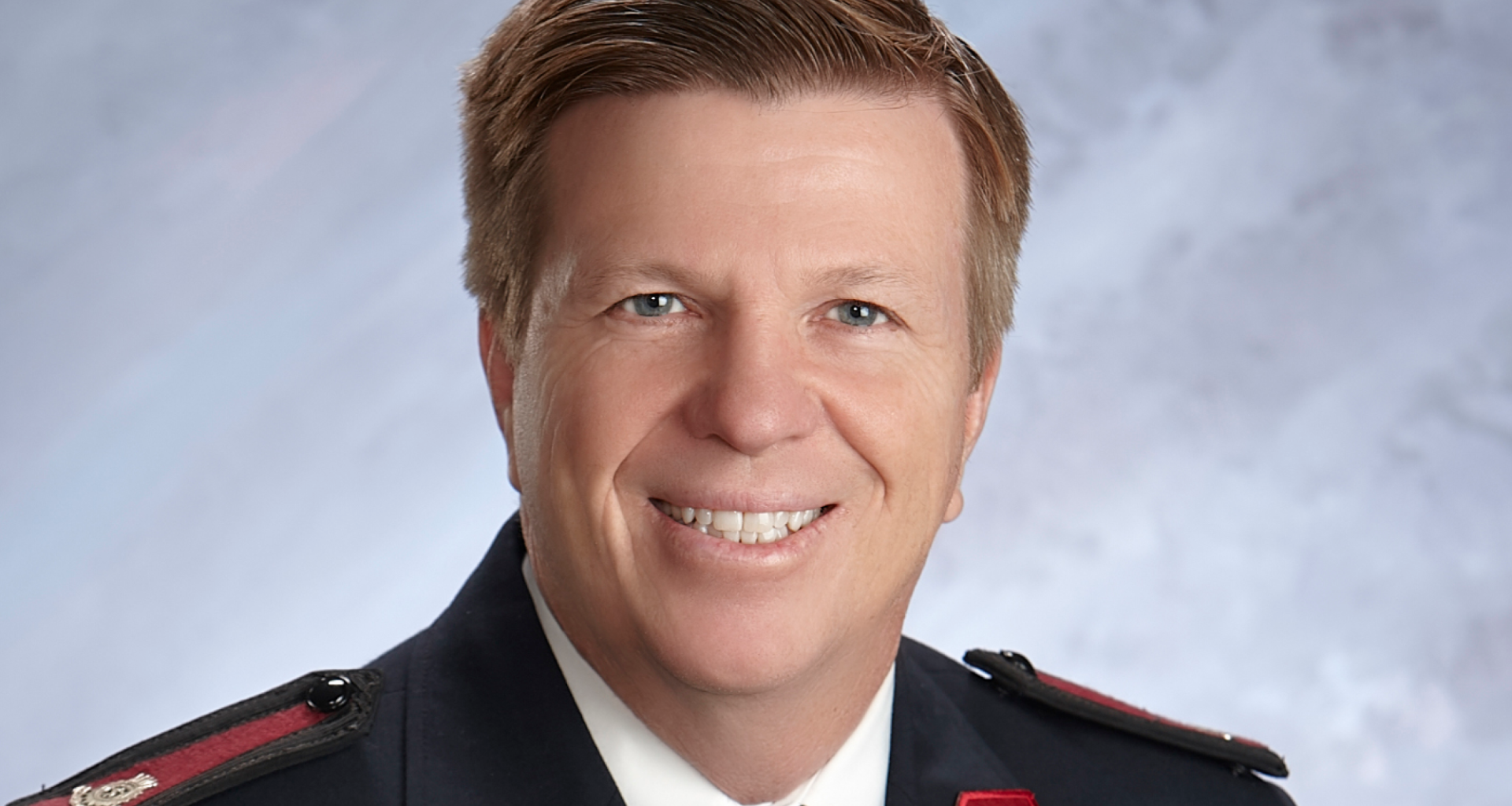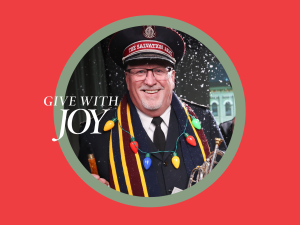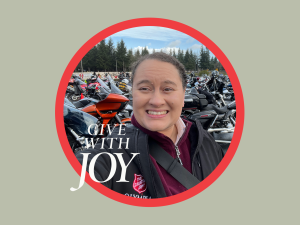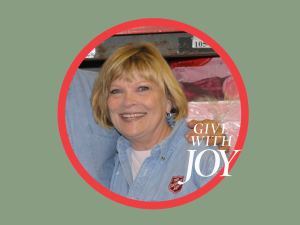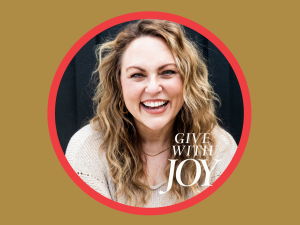Where would you go if you could live anywhere you wanted?
For a lot of Americans, the answer is Phoenix. You might not be aware, but Maricopa County, Arizona, which includes Phoenix, Mesa and Scottsdale, has held the title of “fastest growing county in the U.S. by numeric growth” for much of the past decade.
Many of the tens of thousands of people who moved to Maricopa during the height of the pandemic have chosen to stay. And with some high-paying employers coming to the Valley, the area continues to attract more and more residents.
But, Maricopa isn’t just one of the hottest places in terms of popularity. It’s also the literal hottest metropolitan area in the U.S.
Summertime, in particular, is dangerously hot in Maricopa County, and getting hotter every passing year. In fact, according to the Maricopa Association of Governments (MAG), there have been an average of nearly 200 heat-associated deaths per year in Maricopa County since 2014. Last year, in 2023, Maricopa County identified a total of 645 heat-related deaths. That represents a 52 percent increase from the previous year and the most heat-related deaths ever recorded.
Of course, the more frequent and intense heat waves as well as longer heat seasons lengthens the window of time when people are at risk. It’s something The Salvation Army is paying close attention to. The Salvation Army runs a network of heat relief stations throughout Maricopa County to help residents stay safe and hydrated, and out of the record-breaking temperatures.
Late last year, The Salvation Army Southwest Division participated in the Arizona Department of Health Services 2023 Arizona Heat Planning Summit to discuss strategies moving forward as the state prepares for the heat.
In this episode, Lt. Colonel Ivan Wild, Divisional Commander of The Salvation Army Southwest Division, is here to talk about The Salvation Army’s heat-related disaster response efforts and how the organization plans to better serve its communities amid more extreme weather events.
Show highlights include:
- The Salvation Army in the Phoenix area has implemented various strategies to address extreme heat and prevent heat-related deaths, including hydration and cooling stations, mobile units and collaboration with other organizations.
- Education and awareness about heat safety are crucial in preventing heat-related illnesses and deaths.
- The Salvation Army also provides emotional and spiritual support to those affected by the heat.
- Preparation and training are key in responding to extreme weather events like heatwaves and flash floods.
- Support The Salvation Army’s efforts by donating, volunteering and spreading awareness.
Listen and subscribe to the Do Gooders Podcast now. Below is a transcript of the episode, edited for readability. For more information on the people and ideas in the episode, see the links at the bottom of this post.
* * *
Christin Thieme: Lieutenant Colonel Ivan Wild, welcome to The Do Gooders Podcast. Thank you so much for being here today.
Lt. Col. Ivan Wild: Thanks for having me. Appreciate it.
Christin Thieme: I know summertime is coming up where you are, but you are not originally from Arizona and the Phoenix area. Can you tell us, before we really get into the meat of our topic today, when you first moved to Arizona, what was your initial take on the heat that comes with an Arizona summer?
Lt. Col. Ivan Wild: It really zaps the energy out of you. Especially if you moved during the summertime, which we did, driving in an air-conditioned car and then you stop and then get out. And it hits you like a hairdryer, like full blast, the heat was over 110 degrees when we arrived. So yeah, those first few days really zaps the energy out of you. My kids were actually a little bit sick and nauseous for the first few days just because it was so hot.
Christin Thieme: Yeah, it takes a bit to get used to it, I’m sure. I’ve been once during the summertime and it was a lot. So I credit all of you for living there. But that’s kind of what we wanted to get into today. We’re doing this series about the state of disaster response for The Salvation Army. And heat is part of that, which you don’t always think about when we often think about tornadoes and floods and fires.
But the heat, like you talk about, can have a real physical response for people. So it’s something that The Salvation Army works hard to address, I know. And so thank you for being willing to share with us today about what we’re doing in specifically the Phoenix area, especially as Maricopa County, where you are, it has this booming population, which is also colliding with its status as the hottest major metro area in the US, which is an interesting fact.
So how is The Salvation Army adapting its heat relief efforts in this area to serve what’s a growing number of residents there?
Lt. Col. Ivan Wild: Phoenix has always been hot during the summer, but like you mentioned, through the expansion, one of the fastest growing cities, one of the largest cities in the US in the amount of people being condensed with all the construction, the asphalt, the cement, just really escalates the danger of excessive heat.
And in the past few years, The Salvation Army has led the way, I believe, in the city of really focusing intentionally on how we are serving and not just the vulnerable population, which was the first main goal, but just people in general to alleviate the unfortunate heat-related deaths.
Last year, over 600 people unfortunately passed away due to the heat-related situations. So we really want to address that. One is too many. It can be prevented. And so The Salvation Army really focuses intentionally. How are we going to position ourselves to serve the most amount of people that really need this type of hydration help.
Christin Thieme: It’s interesting, it was a 52 percent increase in heat-related deaths in the county last year, which is staggering when you think about it. So what are some of the biggest challenges that The Salvation Army faces in keeping people safe during, especially those extreme heat events? I mean, it’s always hot, but there are some times where what are considered heat events happen, and that’s really, really important.
Lt. Col. Ivan Wild: So it’s always hot, four months out of the year, but we get to what’s called the extreme heat advisory. We watch out for the weather station, and it has to do with the amount of excessive days of temperatures over a certain degree, over 100 degrees, 105, the precipitation, the moisture in the air and lack of. And so it has all these formulas that somebody has created. We just know that it’s hot and people need to be served.
So when we get a heat advisory, we send out our mobile units and we make sure we go to places where people find themselves kind of trapped, if you will, in the heat, such as parks, under bridges. And I don’t think people realize just the amount of moisture evaporated from the body in this extreme dry heat, just walking across a parking lot, walking around the block.
Even taking your dog for a walk early in the morning and people think, oh, it’s not that hot, but really because it’s been a few days that their bodies need extra hydration.
And so we want to really come in and number one, to answer your question more directly is what are we doing? Number one thing we really want to do is educate people and make sure that people have the information of how to stay hydrated and then where they can go to find that hydration and cooling station. So those are kind of the ways that we’ve approached it moving forward. Education and then resourcing.
Christin Thieme: And when it comes to those resources, you talked about the hydration and cooling stations. What are those? Can you give us a little bit of a picture of what that is?
Lt. Col. Ivan Wild: So we try to hit it on three different levels. One is what we call a hydration station. And any one of our facilities in the Valley and across Arizona for that part, but really focused on Maricopa County within the Valley, all our physical facilities offer what’s called a hydration center. And that’s where people could come in, sit down in an air conditioned area, lobby room, or whatever the facility can offer. As well as getting at least water hydration.
And then depending on the resources available, they can receive other types of things like hygiene kits, lip balm, sometimes sun protection as well. So anybody, and this is what’s really important is that it doesn’t have to be a vulnerable unsheltered person, it could be anybody that’s just walking by. I mean, like I said, walking your dog around the block you can find yourself getting some heat related illness. So anybody can come into any one of those stations that are always open Monday through Friday during normal business hours. That’s what we call a hydration station.
Then we also have a few places that have been selected due to resources available to have what’s called a cooling station. And that’s where people could come in for an extended period of time. So they could actually come in. There’s usually a place where there’s cots, air conditioning, there might be one meal a day, but they could really come in for the whole day. They can power up their iPhones and they could actually come in for the whole day. And then we have referrals from there. So usually those who come into our cooling stations are a little bit more of a vulnerable population, some homeless, some that are unsheltered. And so we will also work with referrals and bring in other agencies to work with us to help those that come into it. So that’s the second one.
And the third one is we have what’s called our mobile units. And that’s when we have the severe heat warnings that we put teams together and go into parks, go into encampments, go into various places where people may not have access to hydration. And then we provide it there as well. So those are the three approaches that we take.
Christin Thieme: You touched on this a bit, but I think that’s something important to note. I want to just come back to it a little bit. These, what’s really a disaster response efforts, the cooling and hydration efforts. How did those act as a means for The Salvation Army to do more for people in the area?
Lt. Col. Ivan Wild: Number one is I think really the way we’ve been able to do that is really by collaborating and being part of the discussion. And I think that’s really important is to be part of the discussions with the city as the city and county become more aware, realizing the actual danger and the disaster service, if you will, that The Salvation Army be at the table, being discussing that, being part of what we call the Maricopa Association of Governments, where we help coordinate and give our expertise as well as receiving from them. So it’s really collaborating to make the dollar be stretched or the bottle of water be stretched. And so that it’s a collaboration between The Salvation Army, the government and other agencies. And then with that educating and really letting people know how they can stay hydrated, how they can get out of the sun.
And then one of the things that we do is then we empower other people through our advisory board through church organizations is for they themselves to actually take with them water in the car to have a case of water in the car. That water can save someone’s life. So when somebody approaches you and they look thirsty or they’re asking for money at least you can offer them water, and then give them a direction of where to go. So I think it’s being very intentional. I’m very focused knowing what the dangers are and how can we fill that gap? How can we come in and partner with everybody and to reduce those numbers. Like I said, one death is too much and we want to eliminate it all.
Christin Thieme: I know as part of that collaboration, The Salvation Army participated in the Arizona Heat Planning Summit last year. What was that summit? What did we learn from that? And how will that, if it will, inform our approach moving forward maybe into this summer?
Lt. Col. Ivan Wild: It was good to be, again, to be part of that, to be part of those discussions, to hear from experts, to be talking from the nonprofit sector, that private sector, and then working with the government agencies. So all of that collaborative effort of people with expertise in the medical field, and then what The Salvation Army can do. And what we kind of learned from that is things that we’ve kind of known, but now making those relationships. It’s really building relationships and collaborating with all stakeholders in a community to alleviate the problem. All the way from a small church that may only have a handful of congregants, but they themselves can open up a hydration station.
We’ve actually provided water for some of the smaller areas that want to help people. So we’ll take water over to that small community church to make sure that they stay hydrated. So that’s the main that we got out of it was, is that how every organization, every nonprofit, every church, even businesses can get involved to open their doors and provide water and allow people to get out of that excessive heat. Just getting out of the heat for about a half hour, 30 minutes. If you can get into a cool building for about 30 minutes, drink some water, if they have Gatorade or that kind of thing, can really replenish to get you on your way. And so if everybody is doing that, then those numbers can drop dramatically. So that’s really kind of what we got out of that.
And then, so then going forward to answer your second part of the question, going forward is, okay, what is our scope of contacts? You know, where’s our, where are our points of contact? Who are we already in relationship with? And let’s partner with them. Let’s educate them. Let’s resource them. So that they can be part of the overall strategy for heat relief.
Christin Thieme: You know, the education piece is so important as Phoenix continues to attract new residents, we see the population continually growing. Some of these people may not be acclimated to the desert heat. So how are we raising awareness about heat safety? Maybe especially among some of these newcomers.
Lt. Col. Ivan Wild: Yeah, that’s one of the strategies that we were really looking at out of the summit and even for ourselves, even debriefing as we go to approach this year. And some of the ways that we are doing that is, we give information or a point in the right direction, say for even schools. That’s kind of our first line, especially in the schools, like in the area that we’re located from our family shelter, is that we get a transient population. A little bit more vulnerable families. There’s families that are living in shelters that go to the schools. So we really want to start there.
We want to get information there. Of course, there’s a lot of information on the various websites. But what we want to do is, all our touch points at our various corps, our various centers, is to not wait until the extreme heat, but prior. So even now, we’re starting to promote and let people know the dangers, to be careful how to stay hydrated and where they can also get free water and supplies when needed.
Christin Thieme: We’re seeing heat waves that are more frequent and more intense year over year. Is there any discussion internally about how to prepare for a future with even hotter summers?
Lt. Col. Ivan Wild: I think that preparation is key and, fortunately, we’re very blessed to have a really good warehouse and we have good connections now over the years. And this is where partnering and collaboration comes in is with some corporate donors and people that know that every year they’re gonna make sure that we have enough water.
So like last summer, I think we distributed, in the Valley, 169,000 water bottles. Like when you see how many pallets of water that is and how heavy that is, it takes a lot of labor power, manpower, volunteer power to move and logistically have all that. And so, being prepared in advance, knowing that we can call whatever corporation, we can call so and so that allows us to have space for two months, while we can distribute water is huge. So that’s kind of how we’re planning and preparing in the future, making sure that we have a pipeline of open resources to get to people that we need.
Christin Thieme: Beyond heat waves, there’s other extreme weather events like flash floods in Arizona. So how does The Salvation Army in the Southwest Division as a whole, not just Arizona, how do you prepare for the diverse weather threats that could come at any time?
Lt. Col. Ivan Wild: I think for us, you know, we really have a good emergency disaster service person who works tirelessly on preparation, training, having EDS teams spread around our division, knowing that especially the high risk areas. And so we make sure that we are proactive in training to make sure that the volunteers or staff have the basic training.
So for instance, for a canteen, you have to have a food handler’s certification to work off the canteen. And so make sure that all those things are in place so when these disasters happen, we can respond right away. And those that are survivors or those that are first responders that we can make sure that we hit. So training and preparation.
You talked about flash floods. Again, having a pipeline, having access to resources and products to help in the flash flood, so right away we can put together cleaning kits if it’s just that, or we are a part of what’s called VOAD. We’re a part of all the various disaster collaborations for a state so that we’re called upon when people have to evacuate and then we can go and directly work with the shelter or that community.
And then of course, The Salvation Army stays there through the full recovery. And so it’s really the preparation and training is probably the two key factors to make sure that we can respond when these disasters happen.
Christin Thieme: And along that line, it’s a final question for you. You mentioned having water in the car. How can listeners who are maybe interested or concerned about heat safety, about getting involved in this particular way, how can they best support The Salvation Army’s efforts in this realm?
Lt. Col. Ivan Wild: Obviously, donations are always good. It does cost to serve the population. So you can make donations, but you go to the website, SalvationArmyPhoenix.org and there’s whole sections on heat relief and how you can get involved, how you can spread the information, how you can put together a cooling station, how you can volunteer and come alongside The Salvation Army to make it happen. I think one other aspect that, I don’t know if we touched on, but I think it’s also important that even during these times, that we also offer emotional and spiritual support.
And so again, use the example, this was a true story from last summer, somebody walking their dog felt a bit faint, you know, felt lightheaded, saw the big sign, we have big signs at all our centers saying hydration center or cooling center. And so they just wandered in, they sat down, unfortunately, she had just lost her husband just a few weeks earlier, and so, you know, was out for a walk. And so, the corps officer was able to sit down with that person, not only just give them water, but actually listen and pray with them. And that’s huge.
Just to offer that hope, to let them know that they’re not alone, that somebody is there that cares for them, so both the physical and the spiritual. And so, throughout the heat relief is a great opportunity that we offer emotional and spiritual care as well. And that’s built into the training and the preparation and having things available at all our centers. So I think that’s an important part, but again, check out TheSalvationArmyPhoenix.org, and there’s a lot more information there.
Christin Thieme: It’s an element you don’t always think about. I mean, you see the water bottle, but having somebody there to give it to you and to talk to you along the way is such an important part of that. Well, thank you so much, Colonel, for sharing today and for the work that you’re doing. And we’ll be thinking of you all as things heat up.
Lt. Col. Ivan Wild: Definitely. Thank you so much. And come and visit us in August or July, middle of July. And then you can go out on one of the heat relief teams. It’s exhausting, but it’s rewarding too. So, but anytime, we’d love to have you in Phoenix.
Additional resources:
- Do you enjoy inspiring stories of impact that build well-being for all? Want to know how to get involved in doing good right where you are? Interested in tools for taking your next best step, owning your story and stepping into your calling? Like reminders that God is good, faithful and offers you joy and peace? Get the Do Good Digest and find weekly inspiration right inside your inbox.
Listen and subscribe to the Do Gooders Podcast now.








